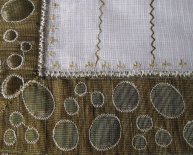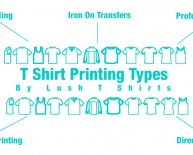
Different Types of polyester
Types of Polyester
The are generally available in two varieties- PET (polyethylene terephthalate) and PCDT (poly-1, 4-cyclohexylene-dimethylene terephthalate). PET is the most common production. It is stronger than PCDT, while PCDT has more elasticity and resilience. PET can be used alone or blended with other fabrics for making wrinkle free and stain resistant clothing that can retain its shape. PCDT is more suitable for heavier applications, such as draperies and furniture coverings. Modifications can be introduced in each of these varieties for obtaining specific properties.
PET Polyester
For manufacturing PET Polyester, the main raw material is ethylene derived from petroleum. It is oxidized to produce a glycol monomer dihydric alcohol which is further combined with another monomer, terephthalic acid at a high temperature in a vacuum. Polymerization, the chemical process that produces the finished polyester, is done with the help of catalysts. The colorless molten polyester then flows from a slot in a vessel on to a casting wheel and takes shape of a ribbon as it cools to hardness. The polymer thus produced is then cut into very small chips, dried to remove all moisture and blended to make it uniform for getting it ready for spinning into yarn.
This variation of polyester is made by condensing terephthalic acid with 1, 4-cyclohexane-dimethanol to form poly-1, 4-cyclohexylene-dimethylene terephthalate or the PCDT Polyester. As for PET Polyester, PCDT is processed for melt spinning.
Spinning
Polymer chips are melted at 500-518°F (260-270°C) to form a syrup-like solution. The molten polymer is then extruded through a spinneret and the filaments are subsequently drawn into the desired polyester fiber. Variations are introduced to obtain desired end results. Spinnerets having hole of different shapes such as round, trilobal, pentalobal, hexalobal or octalobal can be used for special effects like opacity, luster or its suppression, wicking, comfort or feel. Hollow fibers may be produced to make it lightweight and for providing greater cushioning or insulative properties. Crepe effect can be obtained through crimps. Certain additives may also be combined with the spinning solutions for specific properties. Delusterant can be added to make the fiber dull, a flame retardant may be added or certain other antistatic substance may also be included.
Drawing
After extrusion from the spinneret, the fibers are drawn or elongated, with the help of godet wheels. Depending upon the desired properties, the polyester fibers are usually drawn up to five times its original length. For higher tenacity, the filaments are drawn to a greater extent. When the fibers come in contact with the air, they solidify. Usually, the PET fibers are drawn hot as it produces more uniform fibers. PCDT fibers are drawn at higher temperature due to their higher melting point. During the drawing process itself, fibers may be textured which saves time, efforts and production cost and also gives greater quality control over the finished fibers. After the polyester yarn is drawn, it is wound on large bobbins or flat-wound packages, ready to be woven into material.
Types of Polyester Yarns
The polyester yarns have a wide range of diameters and staple lengths. The yarns are made basically as monofilament yarns, multifilament yarns and spun yarns.
Filament Yarns
PET Polyester is used to make filament yarns either in monofilament or multifilament forms. The direction and amount of twists are decided by the desired end use. The properties are also pre-determined. There are various types of such yarns. There is the bright, regular tenacity polyester yarn having light, stretch and sag resistance, used for sheer lightweight fabrics like tulle, voile and organdy. The regular tenacity semi dull yarn used for various apparels including lingerie. Its more dull version is used for shirts and blouses. Polyester yarns resistant to various chemicals, and micro organisms are produced from high tenacity fibers for such industrial uses as conveyor belts, ropes and nets etc.

















